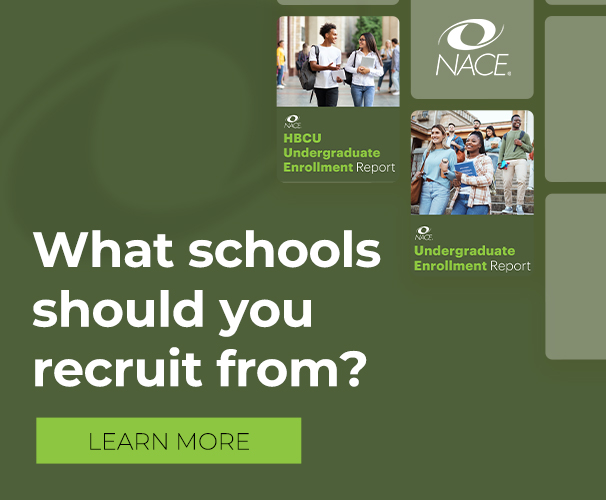Spotlight for Recruiting Professionals
When developing a strategy for retaining early diverse talent, there are key steps for organizations to take and important factors for them to consider to ensure that these efforts are impactful.
“Diversity and inclusion are not ‘check-the-box’ activities,” explains Chelsea C. Williams, founder of and career strategist with College Code, a national education and career management consultancy.
“It’s about intentionally engaging humans and understanding their different levels of awareness on topics around diversity and inclusion. It’s a process, and there are steps that, if prioritized up front, and parameters that, if put in place early on, make all the difference in effective inclusion and diversity strategies.”
Williams notes that there are key steps for developing an effective early diverse talent strategy. Among them are:
- Confirming both a short- and a long-term strategy;
- Clearly setting the strategy’s mission, vision, and goals;
- Identifying stakeholders across titles and functions;
- Determining capital, including financial, resources, human, and time;
- Assessing measurement best practices; and
- Establishing partnerships on campus, in the community, and beyond.
The benefits of retaining early talent include building a pipeline for diverse employees into middle and senior management roles, and providing an opportunity for business productivity, innovation, and growth.
“It can also lead to growing a diverse pipeline as happy, engaged employees share their experiences and speak positively to their friends and greater network,” Williams says.
“This is very important to understand because Gen Z relies heavily on their friends/peers in the decision-making process of prospective employers. They also care deeply about inclusion and representation, which are common conversations in the classroom.”
When developing strategies for retaining diverse early talent, there are also several common pitfalls around which to navigate. For example, not talking with the target diverse population to understand their experience, desires, and needs is a critical misstep.
“It’s important to include end users in the decision-making and program-implementation process so the intended objectives are met,” Williams says.
Other common mistakes include:
- Leaving the responsibility only to HR—Retaining employees requires the support of many stakeholders, senior management, and middle management, across titles and business areas. When thinking about overall strategy, it is important to incorporate a broad range of stakeholders who bring a diverse perspective on the challenges and opportunities.
- Not engaging prospective employees early enough—Engagement of historically underrepresented populations should, at a minimum, begin during college years. Advanced organizations have begun offering exploratory opportunities to high school students.
Making these can have significant consequences on an organization’s efforts.
“They can lead to a misallocation of capital—financial, time, and people,” Williams explains.
“Or, as mentioned earlier, the strategy might be seen simply as a ‘check box’ activity that does not truly move the needle in terms of representation and engagement.”
Other potential consequences include high turnover and disengaged employees.
There are ways, however, to avoid these mishaps and boost retention of early diverse talent. Williams recommends hosting on-site focus groups and attending diversity and inclusion conferences and summits to stay apprised of best practices that can be adapted to and implemented within your organization.
“Also, audit what resources you have internally to support this population,” she says.
“There should be a wide range of potential opportunities, including employee resource groups, mentorship/sponsorship programs, training and development opportunities, philanthropic partnerships, and clearly stated promotion guidelines.”
Getting buy-in from leaders is essential, too. Williams says if this is missing, it can be very difficult to move the needle. She also recommends identifying who will support the strategy beyond the HR team and developing external partnerships.
“What would it look like to ‘engage’ early?” she asks. “When laying the foundation for your diverse early talent retention strategy, clearly define the target diversity focus for your organization and communicate it broadly so there is clarity and, ultimately, buy-in.”






